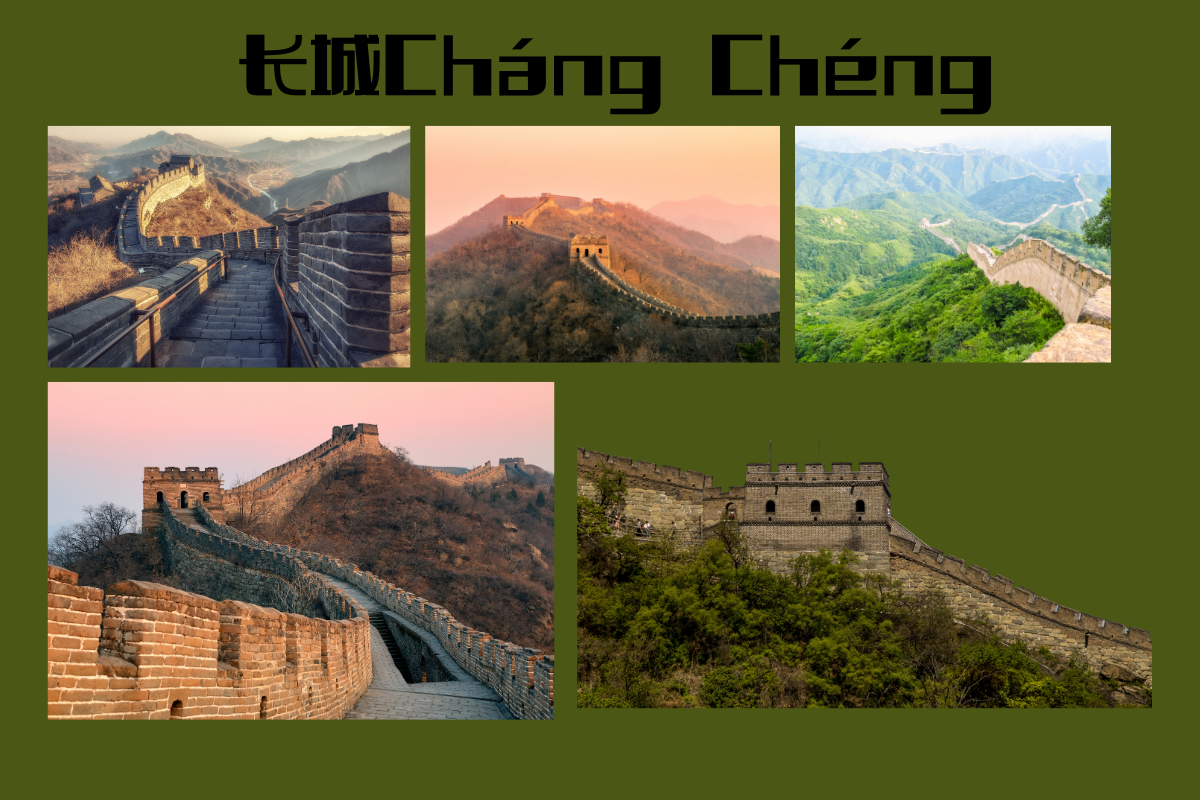The Great Wall: an Epic Journey through Time and History
The Great Wall, known as 长城 (Cháng Chéng) in Chinese, is one of the most awe-inspiring and iconic monuments in the world. Stretching over 13,000 miles across northern China, this historical masterpiece holds immense cultural and historical significance. Let's delve into the key features of the Great Wall and explore its enduring legacy.

历史悠久 (Lìshǐ Yōujiǔ) - A Long and Storied History
The Great Wall's construction began over 2,000 years ago during the Qin Dynasty (221-206 BCE) and continued through successive dynasties. It served as a defense fortification to protect ancient Chinese states from invasions by northern nomadic tribes. The wall's continuous development over centuries reveals the determination and skill of the Chinese people throughout history.
壮丽的景观 (Zhuànglì de Jǐngguān) - Majestic Scenery
The Great Wall winds its way through diverse landscapes, from vast deserts to rugged mountains, presenting breathtaking views at every turn. Standing atop the wall, visitors can marvel at the natural beauty that surrounds them and gain a sense of the wall's grand scale.
文化遗产 (Wénhuà Yíchǎn) - A Cultural Heritage
Recognized as a UNESCO World Heritage Site, the Great Wall embodies the essence of Chinese culture and ingenuity. The construction techniques, watchtowers, and beacon fires were masterfully engineered, showcasing ancient architectural expertise.
旅游胜地 (Lǚyóu Shèngdì) - A Tourist Magnet
Today, the Great Wall attracts millions of visitors from around the world. Tourists can explore various sections of the wall, each offering a unique experience. Popular sections like Badaling and Mutianyu near Beijing provide convenient access and stunning views, while more remote sections like Jiankou and Jinshanling offer a more rugged and adventurous journey.

Now let's learn the pinyin of the two characters "长 城" (chánɡ chénɡ).
"长" (Cháng):
The pronunciation of "Ch" is similar to the "ch" sound in the English word "change," but it should be lighter and not as forceful.
"-ang" like "a" (as in "father") + -ng
When "Ch" is combined with "ang," the pronunciation should be natural and smooth, without pausing between the "Ch" sound.
"城" (Chéng):
The pronunciation of "Ch" is the same as "Ch" in "Cháng," similar to the "ch" sound in the English word "change," but it should be lighter and not as forceful.
"-eng" like "-ung" as in "hung".
so we put the two parts together and pronounce "cheng".
Key Sentences:
The Great Wall is an ancient wonder that reflects China's rich history and cultural heritage.
长城是一项古老的奇迹,反映了中国丰富的历史和文化遗产。
Cháng Chéng shì yī xiàng gǔlǎo de qíjì, fǎnyìng le Zhōngguó fēngfù de lìshǐ hé wénhuà yíchǎn.
Standing on the Great Wall, one can admire its majestic scenery and appreciate the magnitude of its construction.
站在长城上,人们可以欣赏其壮丽的景观,并欣赏其宏伟的建筑之处。
Zhàn zài Cháng Chéng shàng, rénmen kěyǐ xīnshǎng qí zhuànglì de jǐngguān, bìng xīnshǎng qí hóngwěi de jiànzhú zhī chù
The Great Wall's significance extends beyond its historical role, as it remains a powerful symbol of unity and strength for the Chinese people.
长城的意义超越了其历史角色,它仍然是中国人民团结力量的强大象征。
Cháng Chéng de yìyì chāoyuè le qí lìshǐ juésè, tā réngrán shì Zhōngguó rénmín tuánjié lìliàng de qiángdà xiàngzhēng